Growing Corn.
We only sell non GMO sweet corn seed.
Oh, the joy of a fresh ear of corn with a barbecue meal. The fresher, the better, so just picked from your garden insures the best. There are so many ways to prepare sweet corn, apart from the simple corn on the cob. Corn chowder warms the soul on a winter night. Shrimp and corn salad with a lemon, dijon dressing is a gourmet’s delight. Zucchini corn salad with jalapeño peppers, lime and cilantro accompanies many summer meals with a fresh tang.
Growing early, mid and late varieties insures a steady supply throughout the summer. Corn requires fertile ground and because sweet corn is pollinated by the wind, it should be planted in blocks rather than long rows for pollination. Full sun and warm weather are a must. In cooler climates, using cloches fashioned from old milk or clear oil jugs helps hasten the harvest, but starting corn inside is not recommended due to its very fragile root network. Plant corn seeds 1″ to 2″ deep, 4″ to 6″ in 2 1/2′ to 3′ wide rows, roughly two weeks after the last spring frost. Water well after planting and keep moist during germination. Depending on soil conditions, soil crusting can be a serious issue for sprouting after heavy rains or overhead watering. Soil crust (compaction) creates a harder layer of soil that the germinating seeds cannot push through, and even small differences in soil or rainfall can make a big difference in how well the seed germinates. When plants are 3″ to 4″ tall, thin to 8″ to 12″ apart. Corn is designed to grow fast, so periodic fertilizing is recommended. Take care not to damage the roots while weeding. In dry conditions, keep the shallow roots well watered.
Good companion crops are peas, pole beans, cucumbers, pumpkin, squash, melons and marigolds. A bad companion crop is tomatoes.
-
Sale!
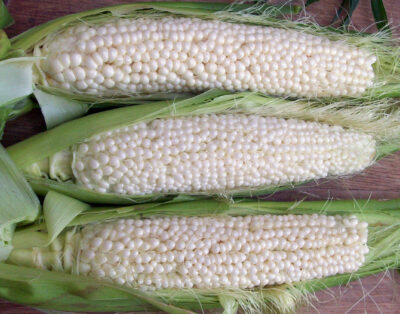
Corn Roasting – Country Gentleman Shoepeg Corn
$2.34 – $10.98 -
Sale!
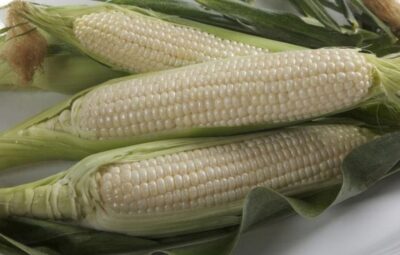
Corn Roasting – Trucker’s Favorite White
$2.34 – $12.51 -
Sale!
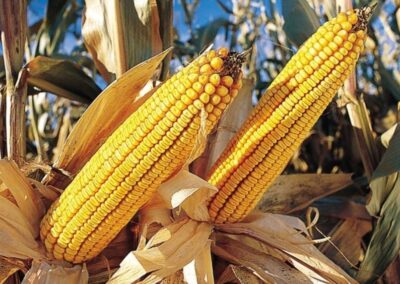
Corn Roasting – Trucker’s Favorite Yellow
$2.34 – $10.98 -
Sale!

Corn Sweet – Ambrosia SE
$2.34 – $23.22 -
Sale!
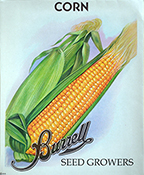
Corn Sweet – Golden Cross Bantam SU
$2.34 – $12.69 -
Sale!
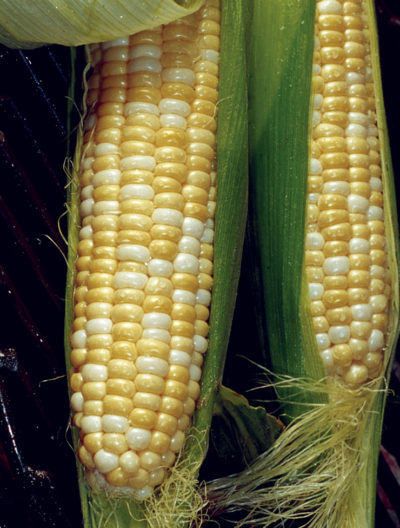
Corn Sweet – Trinity SE
$2.34 – $26.55 -
Sale!

Corn Sweet – Sugar Buns SE
$2.34 – $25.92 -
Sale!
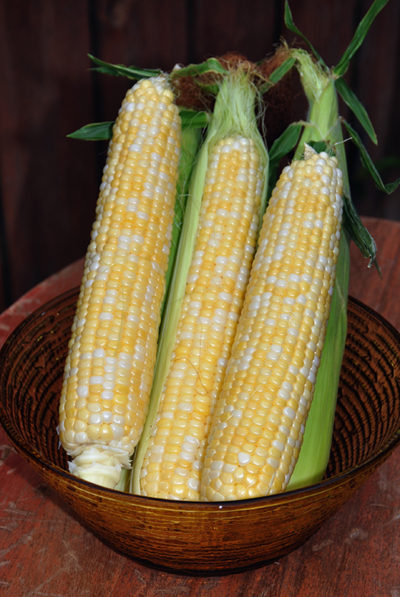
Corn Sweet – Serendipity SE/Syn
$2.34 – $32.40 -
Sale!

Corn Sweet – Honey & Cream SU
$2.34 – $20.61 -
Sale!
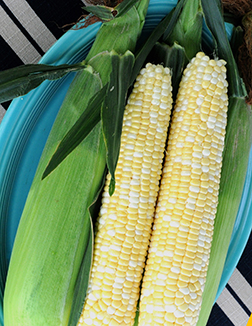
Corn Sweet – Peaches & Cream SE
$2.34 – $12.87 -
Sale!

Corn Sweet – Kandy Korn SE
$2.34 – $13.14 -
Sale!

Corn Sweet – Honey Select SE
$2.34 – $14.49 -
Sale!
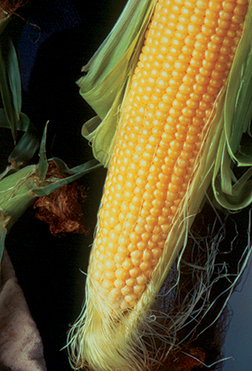
Corn Sweet – Incredible SE
$2.34 – $25.20 -
Sale!

Corn Sweet – Bodacious
$2.34 – $25.29 -
Sale!

Corn Sweet – Silver Queen SU
$2.34 – $13.77 -
Sale!

Corn Sweet – Golden Bantam SU 8 Row
$2.34 – $11.79 -
Sale!

Corn Sweet – Early Sunglow SU
$2.34 – $10.44
There are four main types of hybrid sweet corn: sugary (su), sugar-enhanced (se), shrunken (sh, sh2), and synergistic (sy). Each one contains a different level of sucrose, changing the flavor and texture of the corn.The type of corn will be listed right on the seed packet.
It’s important to be aware of which type of corn you’re growing—not only because of the sugar content, but also due to how easily the types can cross-pollinate. If the wrong combination of types cross-pollinates, the ears that are produced may be of subpar quality.
Sugary (su) sweet corn is the classic sweet corn. Sugary varieties grow vigorously and are stress resistant. The kernels aren’t too sweet and are said to have a “traditional” taste. However, the sugars in sugary sweet corn quickly turn to starch after the ears are picked, so they need to be eaten right after picking. Do not plant near shrunken or synergistic types.
Sugar-enhanced (se) sweet corn is slightly sweeter than sugary varieties. They keep their sweetness for a longer period of time after harvest (a few days) than sugary varieties. They grow well with few issues. Do not plant near shrunken types.
Shrunken (sh, sh2) sweet corn —also called “supersweet”—are the sweetest varieties, containing two to three times more sugar than sugary varieties. The sugar in their kernels lasts even longer after harvest (up to a week) than the other types, but kernels tend to be more crunchy and not taste as “corny.” Shrunken types are also more finicky overall. Do not plant them near any other types; hybrid kernels turn out starchy and tough.
Synergistic (sy) sweet corn combines sugar-enhanced with one of the other two types to create varieties that have the best of both worlds. Synergistic types tend to have very sweet, tender kernels with a good taste and some synergistic varieties can keep up to a week after harvest. Do not plant near sugary or shrunken types.
-
Sale!

Corn Roasting – Country Gentleman Shoepeg Corn
$2.34 – $10.98 -
Sale!

Corn Roasting – Trucker’s Favorite White
$2.34 – $12.51 -
Sale!

Corn Roasting – Trucker’s Favorite Yellow
$2.34 – $10.98 -
Sale!

Corn Sweet – Ambrosia SE
$2.34 – $23.22 -
Sale!

Corn Sweet – Golden Cross Bantam SU
$2.34 – $12.69 -
Sale!

Corn Sweet – Trinity SE
$2.34 – $26.55 -
Sale!

Corn Sweet – Sugar Buns SE
$2.34 – $25.92 -
Sale!

Corn Sweet – Serendipity SE/Syn
$2.34 – $32.40 -
Sale!

Corn Sweet – Honey & Cream SU
$2.34 – $20.61 -
Sale!

Corn Sweet – Peaches & Cream SE
$2.34 – $12.87 -
Sale!

Corn Sweet – Kandy Korn SE
$2.34 – $13.14 -
Sale!

Corn Sweet – Honey Select SE
$2.34 – $14.49 -
Sale!

Corn Sweet – Incredible SE
$2.34 – $25.20 -
Sale!

Corn Sweet – Bodacious
$2.34 – $25.29 -
Sale!

Corn Sweet – Silver Queen SU
$2.34 – $13.77 -
Sale!

Corn Sweet – Golden Bantam SU 8 Row
$2.34 – $11.79 -
Sale!

Corn Sweet – Early Sunglow SU
$2.34 – $10.44
Growing Corn.
We only sell non GMO sweet corn seed.
Oh, the joy of a fresh ear of corn with a barbecue meal. The fresher, the better, so just picked from your garden insures the best. There are so many ways to prepare sweet corn, apart from the simple corn on the cob. Corn chowder warms the soul on a winter night. Shrimp and corn salad with a lemon, dijon dressing is a gourmet’s delight. Zucchini corn salad with jalapeño peppers, lime and cilantro accompanies many summer meals with a fresh tang.
Growing early, mid and late varieties insures a steady supply throughout the summer. Planting Early Sunglow, Golden Bantam and Silver Queen offers a harvest every couple of weeks.
Heirloom corn seeds require fertile ground and should be planted in blocks rather than long rows for pollination. Full sun and warm weather are a must. In cooler climates, using cloches fashioned from old milk or clear oil jugs helps hasten the harvest, but starting corn inside is not recommended. Plant corn seeds 1″ to 2″ deep, 4″ to 6″ in 2 1/2′ to 3′ wide rows, two weeks after the last spring frost. (Planting corn seed too early is risky.) Water well after planting and keep moist during germination. When plants are 3″ to 4″ tall, thin to 8″ to 12″ apart. Corn is designed to grow fast, so periodic fertilizing is recommended. Take care not to damage the roots while weeding. In dry conditions, keep the shallow roots well watered.
Good companion crops are peas, pole beans, cucumbers, pumpkin, squash, melons and marigolds. A bad companion crop is tomatoes.

